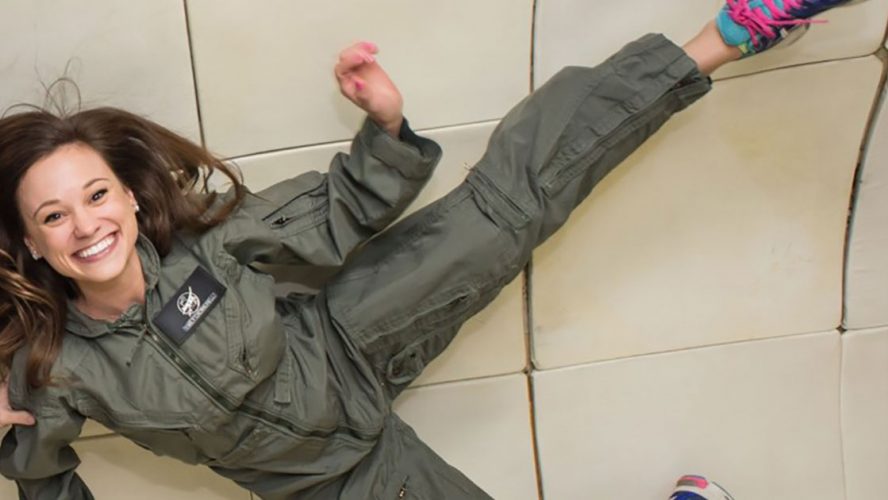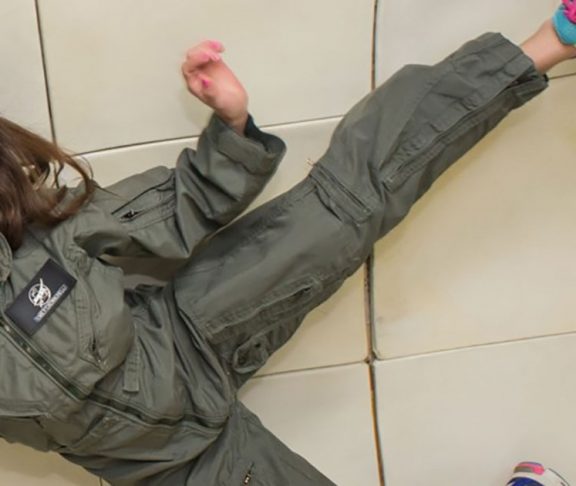By the numbers
According to a recent study by the Women’s Engineering Society, only 9 percent of the engineering workforce is female, and only 6 percent of registered engineers and technicians. These are bleak statistics that Emily Calandrelli has encountered first-hand.
“When I was in high school, we had an equal number of boys and girls that were interested in science and engineering,” she recalls. “We had a robotics class and half of the members were girls. But when I got to college, I was one of two or three girls in a fifty person class.”
At West Virginia University Calandrelli went on to receive a bachelor’s degree in mechanical and aerospace engineering. She later received her master’s from Massachusetts Institute of Technology in aeronautics and astronautics as well as technology and policy.
Odd one out
“I was consistently the odd one out. I felt like I was joining a boys’ club and when you’re young, no one wants to feel like an outsider,” she admits. “Going into engineering as a major is already a pretty bold decision. That very difficult decision is made even harder when you realize that you’re going to be one of the only girls in your entire class.”
Calandrelli believes that encouragement is one thing that prevents women and girls from seeing STEAM as a viable career choice. “Because I wasn’t the smartest kid in my class, I had teachers in the past recommend that I don’t go into the honors science class or that I don’t pursue technical degrees,” she says. The implications of such suggestions can have an extremely detrimental effect on young minds. Multiple studies have shown that when told that men score better in math tests than women, women tend to score worse. When told that this isn’t true, the two genders scored equally well. “If anything, I went after engineering in spite of the teachers I had. But when I got to college, the professors were so supportive and wonderful.”
Re-framing the field
Beyond encouragement, Calandrelli believes that the media has a responsibility to be more honest and proactive about its portrayal of women in science and engineering. Storylines about women working successfully in STEAM are becoming more and more common. Some examples of this include Sandra Bullock’s recent role as an astronaut in “Gravity” and Taraji P. Henson, Octavia Spencer and Janelle Monáe’s 2016 blockbuster “Hidden Figures.” Even so, Calandrelli is working hard to make this growing list even longer; In her first book series, we meet Ada Lace, an eight-year-old girl with a gift for science, math and solving mysteries with technology. It’s her hope that Ada Lace can become a new type of STEAM role model for children.
“Representation is so important,” she urges. “There is something about reading about or watching someone who looks a little bit like you — it makes ideas more relatable. I wanted to create a female role model for a normal kid who happens to love science.”
Emily is also using her position as correspondent on the new Netflix series “Bill Nye Saves the World” to make STEAM more accessible.“Science is intimidating,” she laughs. “I think that ‘Bill Nye Saves the World’ can do for science what ‘The Daily Show’ did for politics.” Critics have long celebrated “The Daily Show” and its ability to re-frame politics in a manner that doesn’t scare or confuse its audience. “A show like Bill Nye’s can help make science interesting, entertaining and relatable to a lot of people.”
Calandrelli’s advice for women hoping to become STEAM professionals? “Make friends with other women in the field. Having a strong group of female friends who are doing the same thing you’re doing can be very valuable. It’s made a huge impact on my life and career.”

